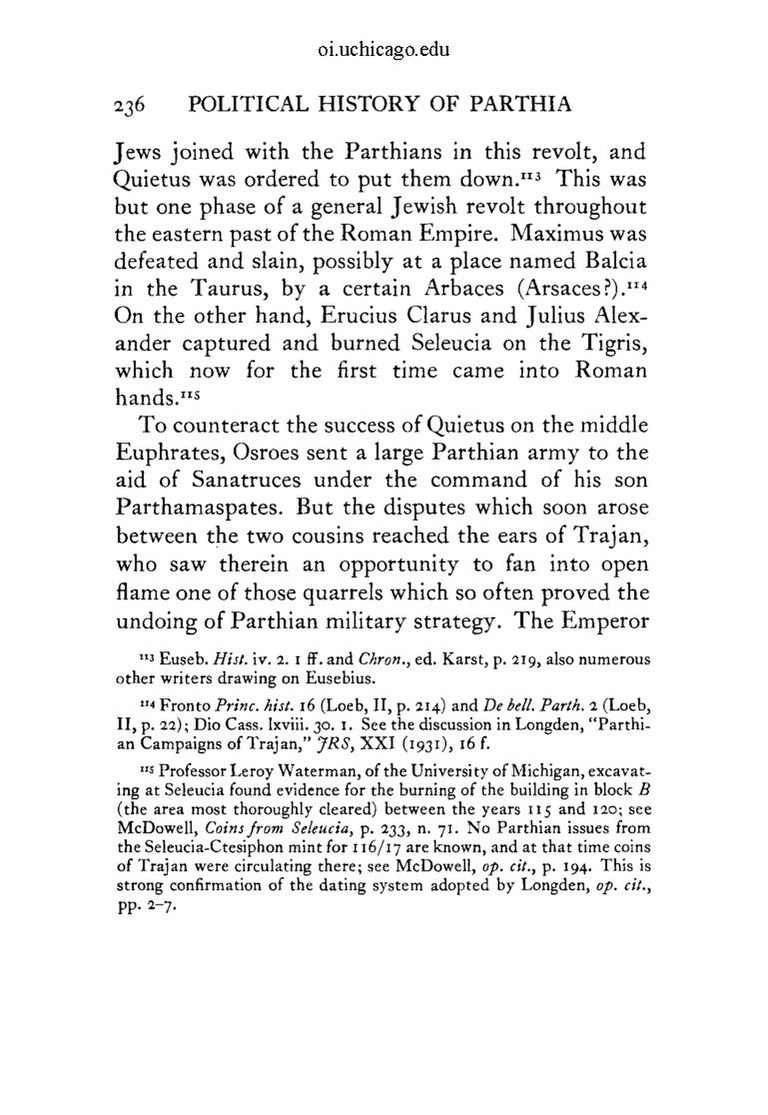Jews joined with the Parthians in this revolt, and Quietus was ordered to put them down.[1] This was but one phase of a general Jewish revolt throughout the eastern past of the Roman Empire. Maximus was defeated and slain, possibly at a place named Balcia in the Taurus, by a certain Arbaces (Arsaces?).[2] On the other hand, Erucius Clarus and Julius Alexander captured and burned Seleucia on the Tigris, which now for the first time came into Roman hands.[3]
To counteract the success of Quietus on the middle Euphrates, Osroes sent a large Parthian army to the aid of Sanatruces under the command of his son Parthamaspates. But the disputes which soon arose between the two cousins reached the ears of Trajan, who saw therein an opportunity to fan into open flame one of those quarrels which so often proved the undoing of Parthian military strategy. The Emperor
- ↑ Euseb. Hist. iv. 2. 1 ff. and Chron., ed. Karst, p. 219, also numerous other writers drawing on Eusebius.
- ↑ Fronto Princ. hist. 16 (Loeb, II, p. 214) and De bell. Parth. 2 (Loeb, II, p. 22); Dio Cass, lxviii. 30. 1. See the discussion in Longden, "Parthian Campaigns of Trajan," JRS, XXI (1931), 16 f.
- ↑ Professor Leroy Waterman, of the University of Michigan, excavating at Seleucia found evidence for the burning of the building in block B (the area most thoroughly cleared) between the years 115 and 120; see McDowell, Coins from Seleucia, p. 233, n. 71. No Parthian issues from the Seleucia-Ctesiphon mint for 116/17 are known, and at that time coins of Trajan were circulating there; see McDowell, op. cit., p. 194. This is strong confirmation of the dating system adopted by Longden, op. cit., pp. 2–7.
